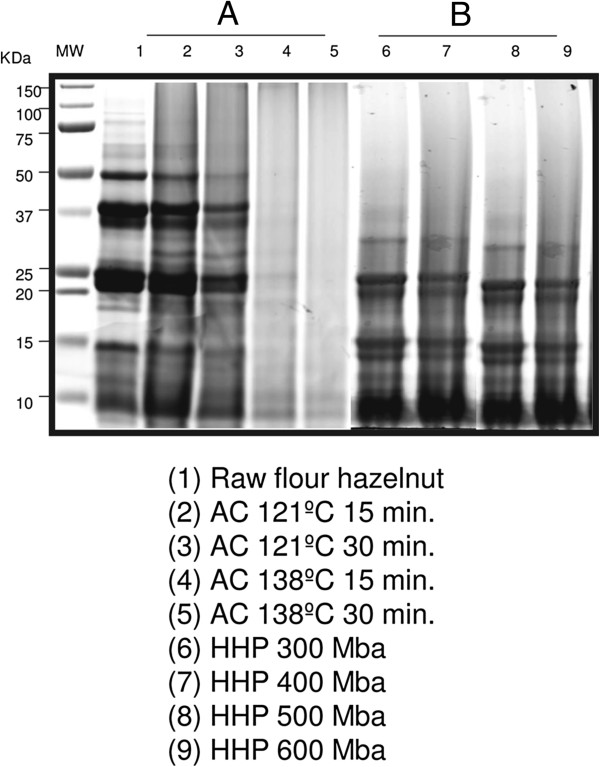Figure 6.
Hazelnut flour samples analyzed by SDS-PAGE 4–20%: the wild-raw proteins and the raw-processed proteins by autoclaving and high pressure with different treatments are illustrated. (A) The electrophoresis analysis of hazelnut flour samples shows that the different protein- patterns can be observed once the raw flour (lane 1) is processed by autoclaving (AC) treatments (lanes 2, 3, 4 and 5). Lane 2 corresponds to AC 121°C 15 mins. Lane 3 corresponds to AC 121°C 30 mins. Lane 4 corresponds to AC 138°C 15 mins. Lane 5 corresponds to AC 138°C 30 mins. ~25 μg of soluble proteins in loading buffer (containing 1 M -mercaptoethanol) was inserted into each lane. (B) By electrophoretic analysis of hazelnut flour samples, it is observed that the protein- patterns of the raw (lane 1) show similar patterns when processed by high pressure (HHP) treatments (lanes 6, 7, 8 and 9). Lane 6 corresponds to HHP 300Mba. Lane 7 corresponds to HHP 400Mba. Lane 8 corresponds to HHP 500Mba. Lane 9 corresponds to HHP 600Mba. ~25 μg of soluble proteins in loading buffer (containing 1 M -mercaptoethanol) was inserted into each lane. (MW: molecular weight, AC: autoclave process, HHP: high pressure process, KDa: kilodalton).

